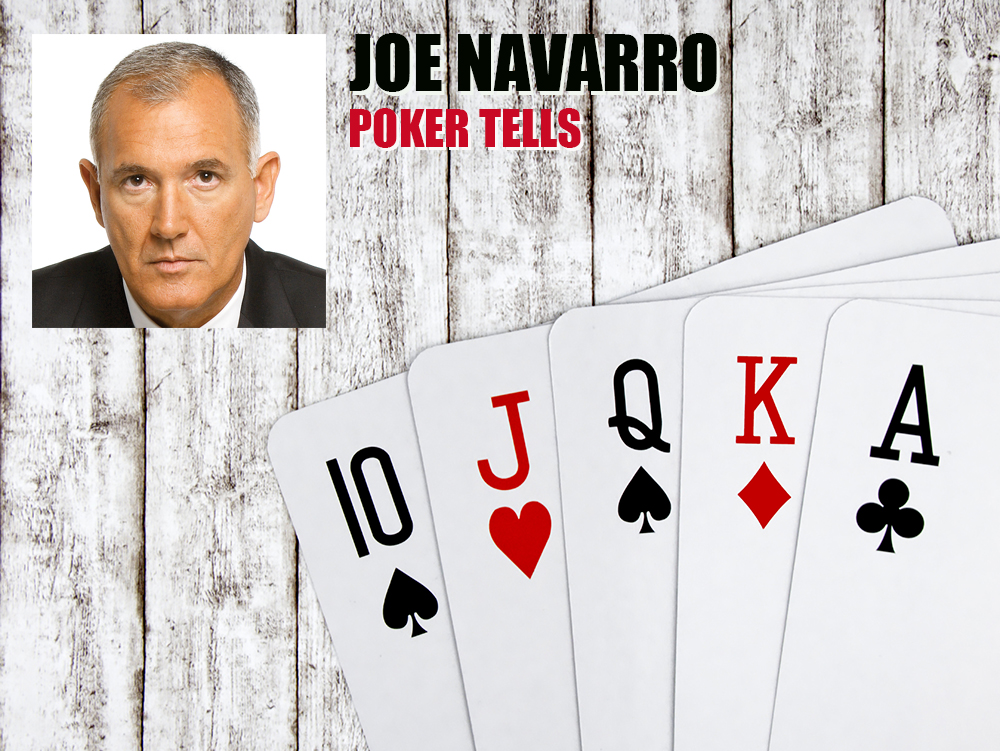In preparation for the World Series of Poker Main Event this year, the WSOP Academy hosted its first mind-and-body seminar on July 4 at the Rio in Las Vegas. I taught the body and famed life-coach Sam Chauhan broke down the mind. For two days, in preparation for this and while attending the Ante Up for Africa event, I got to walk around and observe hundreds of players. I use these opportunities to pick up new tells and validate some old ones.
To those who saw me walking around the main poker room, moleskin journal in hand, yes I was writing all the tells I could see, and noting mistakes that even the pros were making. Over the years I’ve learned there’s always a tell out there that hasn’t been written about or commented on. At the time of this writing, I have noted 212 tells that are verifiable and noteworthy. That’s 128 more than were in my book Read ’em and Reap. The list keeps growing as I observe players deep in play.
I mention this because I’m often asked, “How is it that you pick up these tells?” or “How do you observe them?” To be accurate and fair, I work hard at it, visiting poker events and observing players for hours. Live games or tournaments are like living laboratories.
I’ll never forget while walking around the Borgata in Atlantic City observing two pregnant women playing at different tables at different times of the day, yet displaying the same tell when they were concerned about their ill-advised raise. Both women, after raising, immediately raised their hand to cover their supra-sternal notch (neck dimple just below the Adam’s apple), but in doing so, their hand never reached their lower throats. They both began to cover their necks then suddenly lowered their hand to cover their bellies (fetus).
Had I not been walking around I never would’ve noticed that, something I was able to verify with both of them that day, and later on at various other tournaments. I knew from my research that when we’re weak, scared, lacking confidence or worried, we tend to cover our necks and in particular women cover their neck dimple (men tend to grab their necks or ventilate). What I had never observed before was the significant alteration of this behavior, by both women, to protect their fetus, something I had actually observed while studying primates at the zoo. I’m convinced none of the players at those tables observed this behavior and if they did, I’m confident the real meaning of the behavior escaped them. Both women were transmitting “I am weak!”
Like this tell, I’m sure there are many more, they just need to be discovered. Many of the readers of this column over the years have contacted me to verify tells that I’ve written about or to suggest that I look for other tells that they have noticed. This is also useful in the quest to identify verifiable tells. And while it’s very useful for me and my writing, I have to wonder what tells you are discovering. And by that I mean, if after two years of playing poker, you are still only seeing the same tells you learned about or observed when you started, you are severely hampering yourself. If tells have any significance in poker, and the pros assure me they do, then you as a player need to go beyond your nine favorite tells, whatever or how many they may be. Trust me there are far more than that, and they will affect your bankroll.
So what can you do? Get some books on the subject. Mike Caro’s book is a great place to start. You may want to look at my books, including my last two, What Every Body is Saying and Louder Than Words, which is a business book and yet poker players tell me it has useful tells for the poker player. Read as many authors on the subject of tells as you can because you will find no one has the final word on tells. It’s an evolving subject.
Once you’ve mastered the literature, go watch players. No, I didn’t say go play; that limits you to watching eight players for too long. Go watch multiple tables with multiple players and seek to identify the prominent tells for each player. Do this for about an hour a week, and what you’ll find is that over time you’ll become faster at picking up tells and you’ll notice tells in other parts of the body you may never have noticed before.
For example, as I walked around the tables, I noticed a player who was very intently focused on the middle of the table, when it was his turn, he raised on the river after some deliberation, as the players turned to look at the next player, this player wiped both of his hands on his lap multiple times very quickly. They all missed this tell; he was pacifying the stress of having a weak or marginal hand (he later told me he had nothing). Over the years by training myself to observe everything a person does during an FBI interview, these observations come quickly and reliably. But only because of hard work and dedication to improving the skill of observation; something you can all do.
So as you leave for the next cash game at your favorite poker room, think about just walking around for a while and watching the players before you sit at a table. Treat yourself to an education, one that may reward you in ways you never expected.
— Ex-FBI counterintelligence officer Joe Navarro of Tampa specialized in behavioral analysis for 25 years. He’s a star lecturer with the WSOP Academy.




